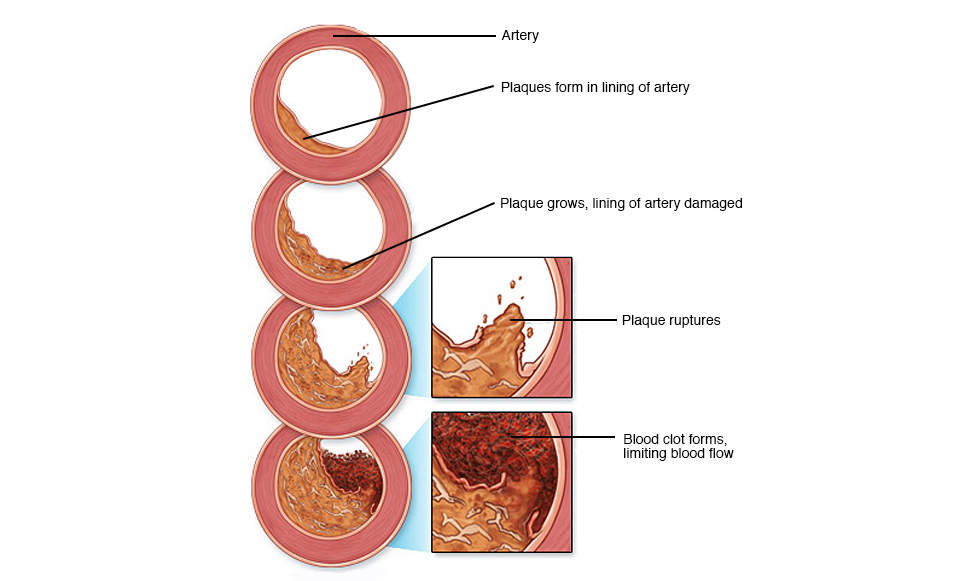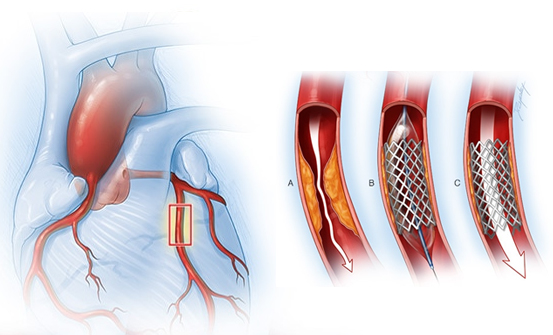Coronary angioplasty, also called percutaneous coronary intervention, is a procedure used to open clogged heart arteries. Angioplasty uses a tiny balloon catheter that is inserted in a blocked blood vessel to help widen it and improve blood flow to the heart.
Angioplasty is often combined with the placement of a small wire mesh tube called a stent. The stent helps prop the artery open, decreasing its chance of narrowing again. Most stents are coated with medication to help keep the artery open (drug-eluting stents). We use the best DES (Drug Eluting Stents) available in the global market.
Angioplasty can improve symptoms of blocked arteries, such as chest pain and shortness of breath. Angioplasty is also often used during a heart attack to quickly open a blocked artery and reduce the amount of damage to the heart and it’s a life saving procedure in acute heart attacks and preferred over all other available options during catastrophic phase till date.

Diagram- Development of atherosclerosis
Angioplasty is used to treat the buildup of fatty plaques in the heart's blood vessels. This buildup is a type of heart disease known as atherosclerosis.
Angioplasty may be a treatment option for you if:
Angioplasty isn't for everyone. Depending on the extent of your heart disease and your overall health, your doctor may determine that coronary artery bypass surgery is a better option than angioplasty for you.
You may need coronary artery bypass surgery if:
In coronary artery bypass surgery, the blocked part of your artery is bypassed using a healthy blood vessel from another part of your body.
Although angioplasty is a less invasive way to open clogged arteries than bypass surgery is, the procedure still carries some risks.
The most common angioplasty risks include:
Before a scheduled angioplasty, your doctor will review your medical history and do a physical exam. You may need to have some tests, including a chest X-ray, electrocardiogram and blood tests, before your procedure. Your doctor will also perform an imaging test called a coronary angiogram to see if the arteries to your heart are blocked and if they can be treated with angioplasty.
If your doctor finds a blockage during your coronary angiogram, he or she may decide to perform angioplasty and stenting immediately after the angiogram while your heart is still catheterized.
Your doctor will give you instructions to help you prepare.
Depending on the complexity of the procedure and number of stents required it may take take 1 to 4 hrs to complete the procedure.
Your doctor will inform you regarding the approximate time anticipated before taking for the procedure.
